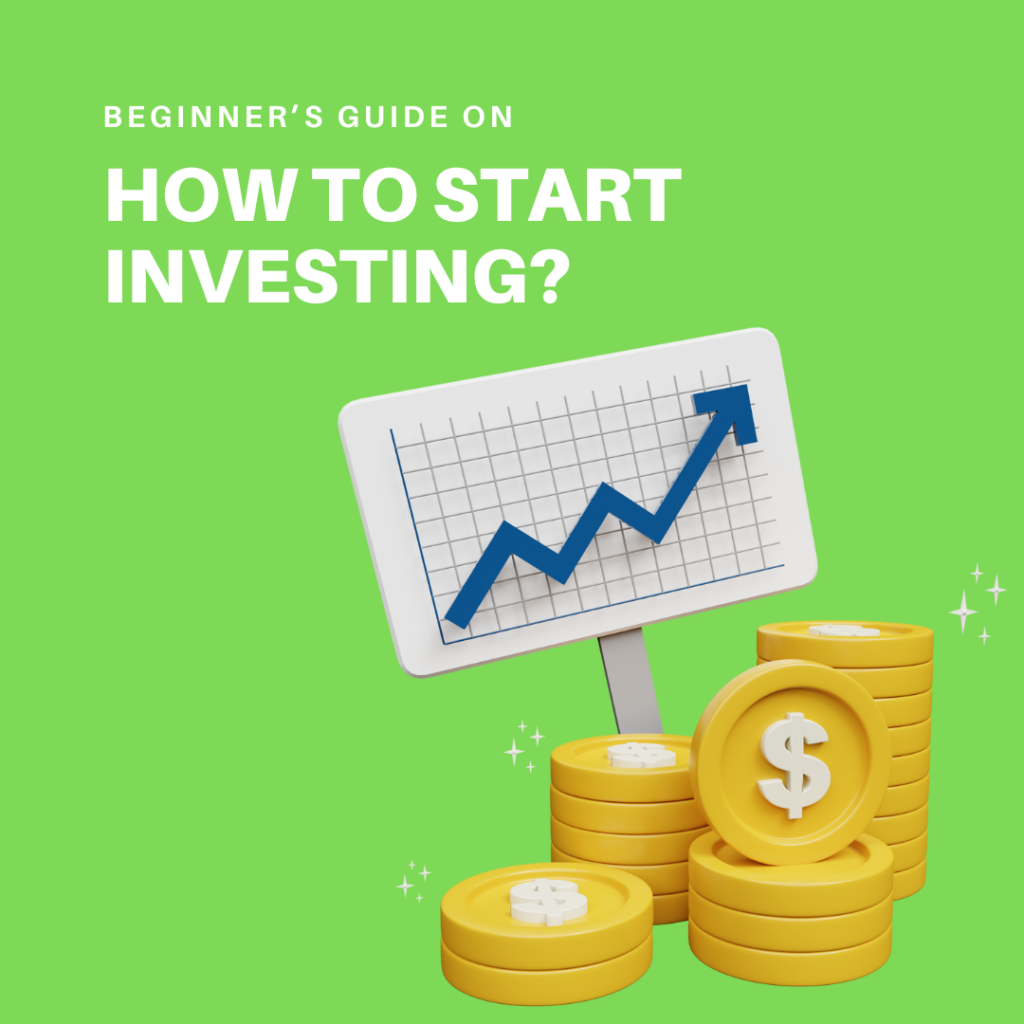
Introduction
Tip 1: The Power of Compound Interest: Get Started Early
Tip 2: The cornerstone of financial success is budgeting.
Tip 3: Make Your Investment Portfolio More Diverse
Tip 4: Utilize Accounts That Offer Tax Benefits
Tip 5: Reduce Debt to Increase Your Financial Independence
Tip 6: Keep an Eye on Your Investments Often
Tip 7: Remain Calm and Steer Clear of Emotional Investing
In conclusion, remain dedicated to your financial path.
Introduction
Personal finance and investing strategies go hand in hand, playing a crucial role in securing your financial future. Whether you’re just starting your career or nearing retirement, managing your finances effectively and making smart investment decisions can be the key to achieving long-term financial success.
In this blog, we will explore seven powerful tips that will help you maximize your investment strategies success while taking control of your personal finances. These tips are designed to help you build a strong financial foundation, optimize your wealth-building strategies, and avoid common pitfalls.
Tip 1: The Power of Compound Interest: Get Started Early
The power of compound interest is one of the most significant elements that go into creating long-term wealth. The process through which the interest received on your investments starts to compound itself, resulting in exponential increase over time, is known as compound interest.
Your money has more time to grow the earlier you begin investin g. If you start early, even little quantities of money can grow into substantial amounts. For instance, assuming a 7% average yearly return strategies, investing $1,000 at age 25 might increase to almost $8,000 by the time you’re 65. However, you would only have about $4,000 by the same age if you waited until you were 35.
You can make your money work for you by utilizing compound interest early on. For this reason, financial counselors frequently advise beginning investments strategies as soon as possible, even if they are just modest.
Tip 2: The cornerstone of financial success is budgeting.
It’s critical to have a thorough understanding of your income strategies, spending, and general financial status before you start investing. The technique of measuring your earnings and outlays to make sure you’re living within your means and setting aside money for future objectives is known as budgeting.
In addition to enabling you to find areas where you may be overspending strategies, a sound budget will help you save more money for investments. You can set aside a portion of your income for investments, retirement savings, and other financial objectives when you have a budget in place.
To make a budget, do the following:
Keep Track of Your Income: Be aware of your monthly income.
Make a list of your expenses: Keep tabs on both variable and fixed costs.
Make Savings and Investing Your Top Priority: Before spending on luxuries, allocate funds for savings and investments.
Review and Modify: Examine your budget on a regular basis and make any necessary modifications.
The basis of any effective investment strategy is a carefully thought-out budget. It guarantees that you’re successfully controlling your present spending while steadily saving and investing for the future.
Tip 3: Make Your Investment Portfolio More Diverse
Diversification is one of the most crucial tactics for optimizing investing strategies success. To lower risk and increase return potential, diversification entails distributing your investments among several asset types.
Stocks, bonds, real estate, mutual funds, exchange-traded funds (ETFs), and alternative investments could all be included in a diverse portfolio. You are less likely to suffer a significant loss if one asset type performs poorly if you diversify. For instance, your bond or real estate assets might still do well in the event of a stock market decline, which would balance out the performance of your entire portfolio.
This is a straightforward illustration of a diversified portfolio:
60% of stocks (for expansion)
30% bonds (for income and stability)
10% Alternatives or Real Estate (for more diversity)
Although diversification can assist control risk and raise the possibility of consistent returns over time, it does not ensure profits.
Tip 4: Utilize Accounts That Offer Tax Benefits
With tax-advantaged accounts, including 401(k)s, HSAs, and IRAs, you can invest your money and get tax advantages. By lowering the taxes you pay on your investment profits strategies, these accounts can assist you in increasing your wealth more effectively.
-
- 401(k): To benefit from pre-tax contributions that lower your taxable income, make contributions to your employer’s 401(k) plan. Matching contributions, which are essentially free money, are another benefit that many businesses provide.
-
- Roth IRA: Contributions to a Roth IRA are made after taxes, but eligible withdrawals and the growth of your investments are tax-free.
-
- Traditional IRA: While withdrawals from a Traditional IRA are taxed as income in retirement, contributions are tax deductible, just like those made to a 401(k).
-
- Health Savings Account (HSA): You can utilize an HSA to save for medical costs and take advantage of triple tax benefits if you have a high-deductible health plan.
Using these accounts effectively can significantly boost your investment returns strategies and help you build wealth faster. Make sure you take full advantage of the tax benefits available to you.Take advantage of all the tax incentives that are at your disposal.
Tip 5: Reduce Debt to Increase Your Financial Independence
One of the biggest obstacles to accumulating wealth and becoming financially independent strategies is debt. Credit card balances and other high-interest debt can be particularly detrimental to your financial well-being. Your ability to save and invest is diminished by the interest you spend on debt, which makes it more difficult to achieve your financial objectives.
Paying off high-interest debt as soon as you can will increase the success of your investments. Think about employing the debt avalanche approach, which pays off the debt with the highest interest rate first, or the debt snowball method, which pays off the smallest debts first.
You can invest a larger portion of your income after paying off high-interest debt. In addition to helping you accumulate wealth, this will also lessen stress and enhance your financial security.
Tip 6: Keep an Eye on Your Investments Often
Investing is not something that should be done once and then. To make sure that your assets are in line with your risk tolerance and financial objectives strategies, it is essential to regularly review them.Certain assets may perform better than anticipated, while others may underperform when market conditions shift. You can alter your portfolio as needed by examining it on a regular basis. This could consist of:
Rebalancing your portfolio involves modifying the asset allocation to preserve the risk-reward ratio that you have selected.
Assessing Performance: Verifying that your assets are fulfilling your long-term objectives.
Keeping abreast of economic and financial developments strategies that may affect your investments is part of staying informed.
Being proactive allows you to spot issues early and make changes before they have an impact on your long-term financial strategy.
Tip 7: Remain Calm and Steer Clear of Emotional Investing
Letting emotions influence one’s financial choices is one of the most common blunders made by investors. Fear and greed can cause people to purchase high and sell cheap, which is the exact reverse of the successful, disciplined investing approach.
During market downturns, fear frequently surfaces, which can result in panic selling and lock in losses.
Greed usually arises during market booms, when people take unwarranted risks in the expectation of making rapid money.
Even in times of market volatility, maintaining composure and adhering to your long-term plan is essential for successful investing. Avoid making snap decisions in response to transient market swings and have faith in the power of time and compound growth.
You can stay on course and make wise judgments with the support of a disciplined strategy, which will ultimately increase the performance of your investments.
Conclusion: Remain dedicated to your financial path.
A long-term perspective, dedication, and understanding are all necessary to maximize your financial performance strategies. You may take charge of your financial destiny and lay the groundwork for wealth building by heeding these seven wise personal finance suggestions.
Remember, investing is a journey, not a sprint. As you work towards your financial objectives, start early, maintain your discipline, and keep learning. You can become financially independent and reap the benefits of your wise choices if you are patient and persistent.
See the following useful resources for additional information on personal finance strategies:

